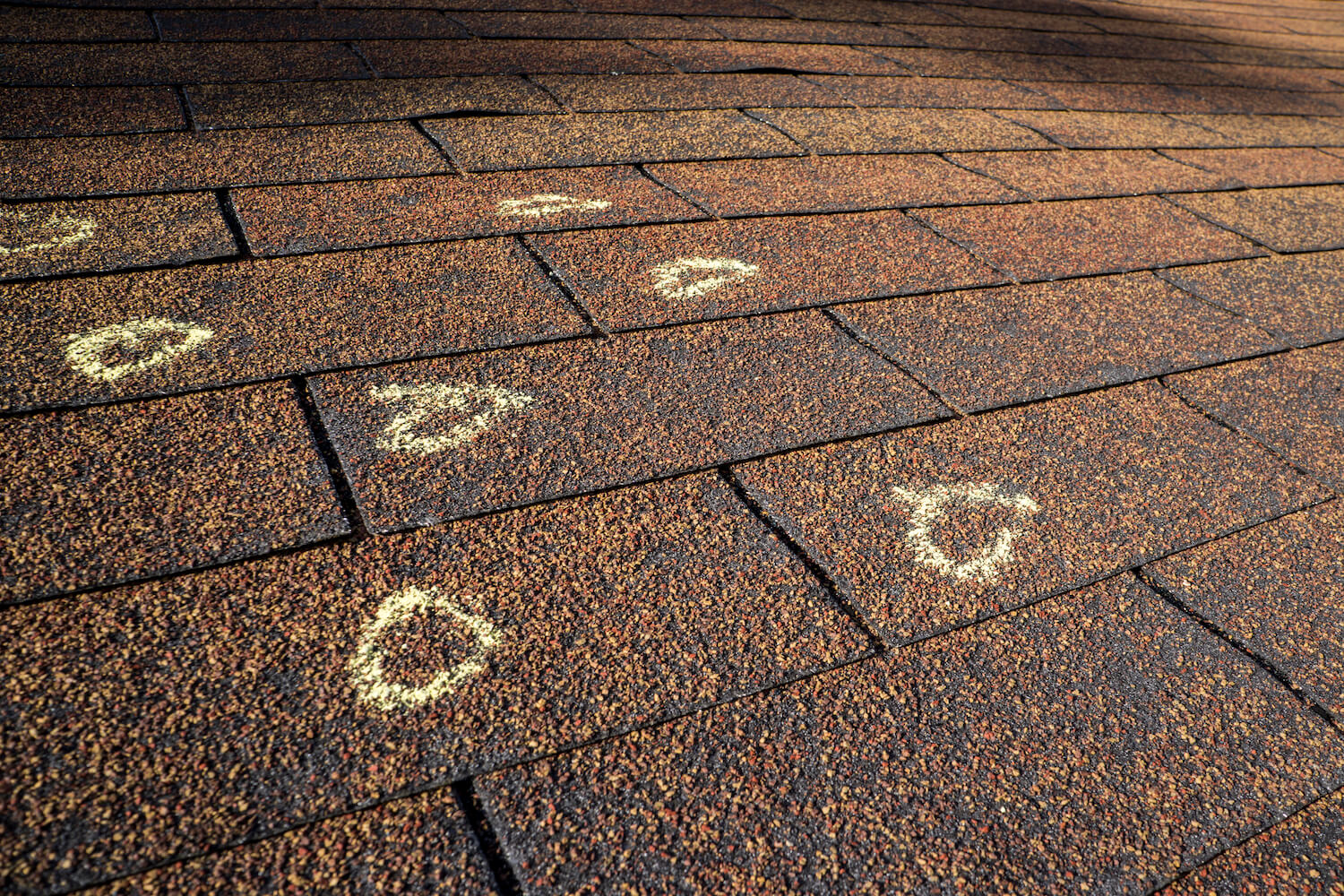When it comes to protecting our homes, the roof stands as the first line of defense against the elements. Whether it’s rain, snow, or the scorching sun, the roof shields us from the forces of nature. However, even the most robust roofs can succumb to wear and tear over time, leading homeowners to consider repairs or replacements. This is where roofing insurance claims play a crucial role in ensuring that homeowners can recover the costs associated with repairing or replacing their damaged roofs.
In this comprehensive guide, we will explore the intricate workings of roofing insurance claims.
From understanding the basics of homeowners insurance to the nitty-gritty details of filing a claim for roofing damage, we will navigate the complex terrain of insurance processes to empower homeowners with the knowledge they need to protect their homes.
Understanding Homeowners Insurance
Before delving into the specifics of roofing insurance claims, it’s essential to grasp the basics of homeowners insurance. Homeowners insurance is a financial safety net that provides coverage for damages to a home and its contents. It typically includes coverage for various perils, such as fire, theft, vandalism, and natural disasters. Importantly for our discussion, homeowners insurance also covers damage to the roof.
When homeowners purchase insurance policies, they select coverage limits and deductibles. Coverage limits determine the maximum amount the insurance company will pay for a covered loss, while deductibles represent the out-of-pocket amount the homeowner must pay before the insurance coverage kicks in. These parameters play a crucial role when it comes to roofing insurance claims.
Types of Roofing Damage Covered by Insurance
Not all roofing damage is treated equally by insurance companies. To be eligible for a roofing insurance claim, the damage must be a result of a covered peril. Common perils include:
- Storm Damage: Severe storms, including hurricanes, tornadoes, and hailstorms, can cause significant damage to roofs. High winds, hailstones, and debris can lead to shingle damage, leaks, or even structural issues.
- Fire Damage: Fires can cause extensive damage to roofs, compromising their integrity. Even if the fire itself doesn’t reach the roof, smoke and heat can still result in structural damage.
- Tree Damage: Falling trees or branches can cause severe damage to roofs. This type of damage is often covered by homeowners insurance, as it is considered a peril.
- Water Damage: While homeowners insurance typically covers sudden and accidental water damage, gradual damage caused by leaks over time may not be covered. It’s crucial to address water damage promptly to prevent further complications.
Understanding the specific perils covered by a homeowners insurance policy is crucial for homeowners seeking to file roofing insurance claims successfully.
Roofing Insurance Claims Process
Filing a roofing insurance claim can be a complex process that requires careful navigation of insurance policies and procedures. The following steps outline the typical process homeowners must follow when filing a roofing insurance claim:
1. Assess the Damage:
Before filing a claim, homeowners should thoroughly assess the damage to their roofs. Documenting the extent of the damage through photographs and detailed notes will provide essential evidence during the claims process.
2. Review Your Insurance Policy:
Understanding the terms and conditions of your homeowner’s insurance policy is crucial. Review coverage limits, deductibles, and the specific perils covered to determine if the damage to your roof falls within the scope of your policy.
3. Contact Your Insurance Company:
Once you’ve assessed the damage and reviewed your policy, contact your insurance company to initiate the claims process. Provide them with a detailed description of the damage, including the date it occurred.
4. Schedule an Inspection:
The insurance company will typically send an adjuster to inspect the damage. The adjuster assesses the extent of the damage and determines the cost of repairs or replacement. Homeowners should be present during the inspection to ensure that all damage is properly documented.
5. Obtain Estimates:
After the inspection, homeowners may need to obtain estimates from roofing contractors for the cost of repairs or replacement. These estimates help in negotiating with the insurance company and provide a basis for the settlement.
6. Negotiate the Settlement:
Insurance companies may offer a settlement based on the adjuster’s assessment and the estimates provided. Homeowners have the right to negotiate the settlement to ensure that it adequately covers the cost of necessary repairs or replacement.
7. Approval and Payment:
Once a settlement is reached, the insurance company will approve the claim, and the homeowner will receive payment. The payment is typically issued in one or more installments, with the first payment covering the actual cash value of the damaged property and subsequent payments covering the depreciation once repairs are completed.
8. Complete Repairs:
With the insurance settlement in hand, homeowners can proceed with hiring a roofing contractor to complete the necessary repairs or replacement. It’s essential to choose a reputable contractor to ensure the work is done to a high standard.
9. Submit Documentation:
After the repairs are completed, homeowners must submit documentation, such as invoices and receipts, to the insurance company as proof that the funds were used for the intended purpose.
Common Challenges and Pitfalls
While the roofing insurance claims process may seem straightforward, several challenges and pitfalls can complicate matters for homeowners. These include:
1. Underestimation of Damage:
Insurance adjusters may underestimate the extent of roofing damage, leading to lower settlements. Homeowners must provide thorough documentation and, if necessary, seek additional estimates to support their claim.
2. Depreciation Deductions:
Insurance companies may deduct depreciation from the settlement amount, especially for older roofs. Homeowners should be aware of this and negotiate to ensure a fair settlement that covers the actual cost of repairs or replacement.
3. Coverage Limitations:
Certain types of roofing damage may not be fully covered by insurance policies. Gradual wear and tear, pre-existing conditions, or certain perils may be excluded. Homeowners should carefully review their policies to understand the limitations.
4. Non-Renewal of Policies:
Filing multiple claims within a short period may lead to non-renewal of homeowners insurance policies. Homeowners need to consider the long-term implications of filing claims and weigh the benefits against potential increases in premiums or non-renewal.
5. Choosing the Right Contractor:
Selecting a reputable and qualified roofing contractor is crucial for the success of the claims process. Hiring an inexperienced or unlicensed contractor can lead to subpar repairs and complications with the insurance company.
Tips for a Smooth Roofing Insurance Claim Process
To navigate the roofing insurance claims process successfully, homeowners can follow these tips:
1. Regular Maintenance:
Perform regular maintenance on your roof to prevent avoidable damage. Keeping your roof in good condition can reduce the likelihood of filing insurance claims.
2. Prompt Action:
Address any signs of damage promptly. Waiting too long to file a claim can lead to further damage, complicating the claims process.
3. Thorough Documentation:
Document the damage extensively with photographs and detailed notes. This documentation serves as crucial evidence during the claims process.
4. Know Your Policy:
Understand the terms and conditions of your homeowner’s insurance policy. Knowing what is covered and what is not can help you make informed decisions throughout the claims process.
5. Obtain Multiple Estimates:
Obtain estimates from multiple roofing contractors to ensure a fair assessment of the repair or replacement costs. This can also serve as valuable negotiation leverage with the insurance company.
6. Be Present During Inspection:
Attend the inspection conducted by the insurance adjuster to ensure all damage is properly documented. Being present allows you to provide additional information and answer any questions.
7. Seek Professional Advice:
If you encounter challenges or disputes with the insurance company, consider seeking professional advice from a public adjuster or an attorney specializing in insurance claims.
Staying Proactive: The Role of Preventive Measures
While insurance claims offer financial relief after damage occurs, proactive measures can significantly reduce the frequency and severity of roofing issues. Implementing preventive strategies is akin to building a fortress against potential threats. Here are some key preventive measures homeowners can take to fortify their roofs:
1. Regular Inspections:
Schedule routine inspections of your roof to identify and address potential issues before they escalate. Early detection of small problems can prevent them from evolving into significant, costly repairs.
2. Clear Debris:
Keep your roof free of debris, such as leaves, branches, and other detritus. Accumulated debris can trap moisture, accelerate wear, and create conditions conducive to mold and mildew growth.
3. Trim Overhanging Trees:
Overhanging branches pose a threat to your roof, especially during storms. Trim branches that extend over your roof to prevent them from falling and causing damage.
4. Reinforce Vulnerable Areas:
Vulnerable areas of the roof, such as valleys and seams, should be reinforced to withstand the elements. Applying sealant to these areas can prevent leaks and water infiltration.
5. Upgrade Roofing Materials:
Consider upgrading to more durable roofing materials. High-quality materials may have a higher upfront cost, but they can provide long-term savings by reducing the frequency of repairs and insurance claims.
6. Install Gutter Guards:
Gutters play a crucial role in directing water away from the roof and foundation. Installing gutter guards helps prevent clogs, ensuring proper water flow and reducing the risk of water damage.
7. Address Ventilation Issues:
Proper ventilation is essential for maintaining the health of your roof. Inadequate ventilation can lead to moisture buildup, compromising the structural integrity of the roof. Ensure that your attic and roof have proper ventilation.
Navigating the Evolving Landscape of Insurance Policies
The world of insurance is dynamic, and policies may change over time. Homeowners should stay informed about any modifications to their insurance policies and understand how these changes may impact coverage for roofing damage. Consider the following factors:
- Policy Renewal Updates: During policy renewal, carefully review any updates or changes in coverage. Insurance companies may modify policies, adjust premiums, or introduce new terms that could affect your coverage for roofing damage.
- Policy Add-ons and Riders: Explore additional coverage options or policy riders that specifically address roofing issues. Some policies offer endorsements for enhanced coverage, providing extra protection for roofs in regions prone to specific perils, such as hailstorms or hurricanes.
In Conclusion: Empowering Homeowners in Roofing Insurance
As we navigate the intricate landscape of roofing insurance claims, it becomes evident that an informed and proactive approach is key to safeguarding our homes. Homeowners play a crucial role in this process, from implementing preventive measures to staying abreast of policy changes and technological advancements.
Roofing insurance is not merely a financial transaction; it is a partnership between homeowners and insurance providers to ensure the longevity and resilience of our homes. By understanding the claims process, addressing challenges proactively, and embracing technological innovations, homeowners can confidently face the challenges of roofing damage with the knowledge that their homes are well-protected, and the sky’s the limit for their peace of mind.









